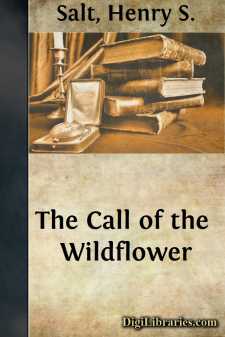Categories
- Antiques & Collectibles 13
- Architecture 36
- Art 48
- Bibles 22
- Biography & Autobiography 813
- Body, Mind & Spirit 142
- Business & Economics 28
- Children's Books 17
- Children's Fiction 14
- Computers 4
- Cooking 94
- Crafts & Hobbies 4
- Drama 346
- Education 46
- Family & Relationships 57
- Fiction 11829
- Games 19
- Gardening 17
- Health & Fitness 34
- History 1377
- House & Home 1
- Humor 147
- Juvenile Fiction 1873
- Juvenile Nonfiction 202
- Language Arts & Disciplines 88
- Law 16
- Literary Collections 686
- Literary Criticism 179
- Mathematics 13
- Medical 41
- Music 40
- Nature 179
- Non-Classifiable 1768
- Performing Arts 7
- Periodicals 1453
- Philosophy 64
- Photography 2
- Poetry 896
- Political Science 203
- Psychology 42
- Reference 154
- Religion 513
- Science 126
- Self-Help 84
- Social Science 81
- Sports & Recreation 34
- Study Aids 3
- Technology & Engineering 59
- Transportation 23
- Travel 463
- True Crime 29
The Call of the Wildflower
by: Henry S. Salt
Description:
Excerpt
THE CALL OF THE WILDFLOWER
Tantus amor florum.
Virgil.
The "call of the wild," where the love of flowers is concerned, has an attraction which is not the less powerful because it is difficult to explain. The charm of the garden may be strong, but it is not so strong as that which draws us to seek for wildflowers in their native haunts, whether of shore or water-meadow, field or wood, moorland or mountain. A garden is but a "zoo" (with the cruelty omitted); and just as the true natural history is that which sends us to study animals in the wilds, not to coop them in cages, so the true botany must bring man to the flower, not the flower to man.
That the lovers of wildflowersâthose, at least, who can give active expression to their loveâare not a numerous folk, is perhaps not surprising; for even a moderate knowledge of the subject demands such favourable conditions as free access to nature, with opportunities for observation beyond what most persons command; but what they lack in numbers they make up in zeal, and to none is the approach of spring more welcome than to those who are then on the watch for the reappearance of floral friends.
For it is as friends, not garden captives or herbarium specimens, that the flower-lover desires to be acquainted with flowers. It is not their uses that attract him; that is the business of the herbalist. Nor is it their structure and analysis; the botanist will see to that. What he craves is a knowledge of the loveliness, the actual life and character of plants in their relation to manâwhat may be called the spiritual aspect of flowersâand this is seen and felt much more closely when they are sought in their free wild state than when they are cultivated on rockery or in parterre.
The reality of this love of wildflowers is evident, but its cause and meaning are less easy to discern. Is it only part of a modern "return to nature," or a sign of some latent sympathy between plant and man? We do not know; but we know that our interest in flowers is no longer utilitarian, as in the herbalism of a bygone time, or decorative and ?sthetic, as in the immemorial use of the garland on festive occasions, and in the association of the wine-cup with the rose. The "great affection" that Chaucer felt for the daisy marked a new era; and later poets have carried the sentiment still further, till it reached a climax in the faith that Wordsworth avowed:
One impulse from a vernal wood
May teach you more of man,
Of moral evil and of good,
Than all the sages can.
Here is a new herbalismâof the heart. We smile nowadays at the credulity of the old physicians, who rated so highly the virtues of certain plants as to assert, for example, that comfreyâthe "great consound," as they called itâhad actual power to unite and solidify a broken bone. But how if there be flowers that can in very truth make whole a broken spirit? Even in the Middle Ages it was recognized that mental benefit was to be gained from this source, as when betony was extolled for its value in driving away despair, and when fuga d?monum was the name given to St....


